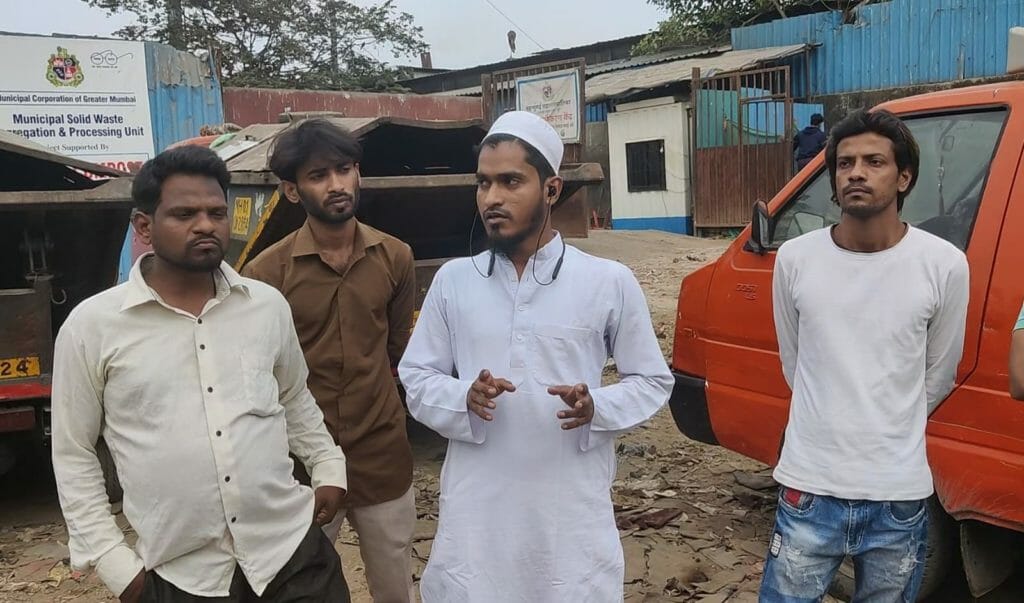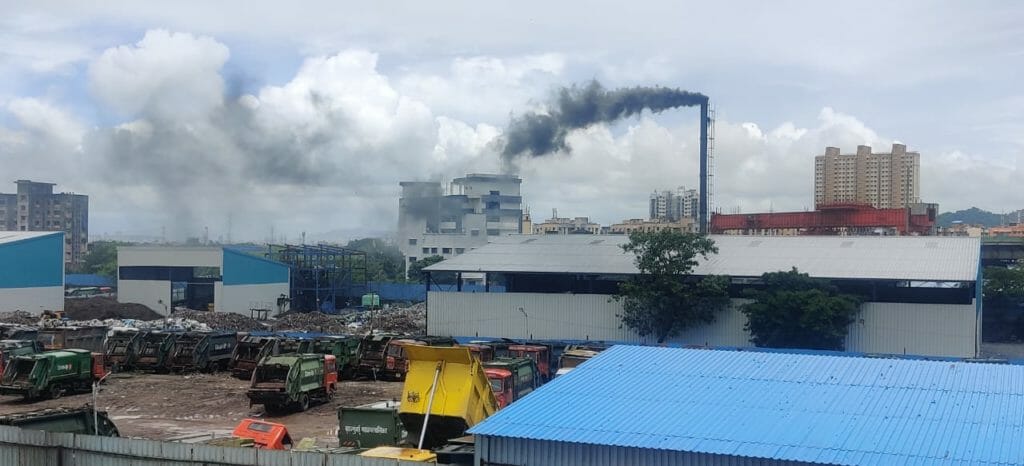It was during the COVID-19 pandemic that I realised that I must join the fight for clean air. As biomedical waste generation increased manifold at health facilities and inside people’s homes, I saw the connection between increasing biomedical waste and the huge quantities of waste being burnt in the incinerator installed in my area.
I live in Govandi, where the life expectancy of the people is at an abysmal 39 years on average. The region has a 132-hectare dumping ground, where waste from the entire city is brought. Govandi was one of the worst hit areas during the pandemic due to ill health, and precarious and cramped housing conditions. The ability of the residents to combat the virus is severely affected because of abject poverty and life in shanties. Apart from the dumping ground, slums and resettlement colonies, we also have small-scale recycling facilities situated in the slums themselves. But the biggest concern for the people is the biomedical waste treatment plant in our neighbourhood.
Read more : People in this Mumbai slum barely make it to 40; here’s why
Biomedical waste processing
When the pandemic was at its peak in May-June 2020, Mumbai was generating as much as 36 tonnes of biomedical waste every day. Biomedical waste is any solid or liquid waste generated during the diagnosis or treatment of human beings. It includes discarded human organs and surgical equipment like syringes and cotton. It must be disposed of separately and treated scientifically as it cannot be recycled. Biomedical waste cannot be mixed with other waste as it has infectious and reactive properties like blood, medicines, and sharp objects.
The Biomedical Waste Management Rules 2016 stipulate guidelines for the scientific disposal of biomedical waste and the government has installed incinerators across the state for treating biomedical waste.
A saga of complaints
The Brihanmumbai Municipal Corporation (BMC) has authorised SMS Envoclean Company to treat biomedical waste on a 20-year contract since 2009. Over the years, toxic emissions from the plant at Govandi East became a serious health concern for us locals. This is the only bio-medical waste treatment facility in all of Mumbai, where hazardous waste is burned regularly in nearby residential areas.

In July 2019, the company was issued a closure notice for non-compliance, but the company managed to obtain a stay order in the same month. Residents who were witnessing the effects of the biomedical plant filed a complaint with the Central Pollution Control Board (CPCB) and we reached out to the authorities through our social media handles, via email, post and news media to make our voices heard. The CPCB directed the Maharashtra PCB to take action but citizens spent the rest of the year filing multiple legal complaints asking for the MPCB to take cognisance.
We also know that the government planned on setting up another biomedical waste treatment plant to offset the burden on the existing plant in Govandi, but there has been no development on that front. We spent the entirety of the first lockdown in 2020 in panic as we were scared of the smoke emanating from the incinerators and its impact on our already deteriorating health. The MPCB finally heard our cries for help and issued a notice to the company over a generation of potentially harmful smoke. It directed the company to monitor the toxic gases being released into the air.
Assurances from the government
We demanded that the company should shift operations out of Govandi and sent notices to the government. The then Environment Minister replied in a matter of days assuring us that the plant would be moved to Khalapur. We finally breathed a sigh of relief and were assured that the plant would be moved out by February 2022.
Our relief was short-lived as the deadline passed and was later extended. No action has been taken against the plant yet. The smoke from the plant continues to rise. We continue to reel from the damage it causes to our bodies. In May, residents also filed a notice at the National Green Tribunal.
Citizen led campaigns
Failure to act on our demands has led us to start a “Boycott Civic Elections” campaign. The NGO I work with sent a notice to MPCB again demanding the closure of the plant. But the MPCB has responded that the plant will remain operational till June 2023 until the Khalapur site receives Environment Clearance is not issued for the Khalapur site. We renewed our struggle with fresh vigour. We kickstarted a campaign to install air quality monitoring devices as part of the Azadi Ka Amrit Mahotsav campaign. Thereafter, we approached the National Human Rights Commission which questioned the MPCB about its inaction. Unfortunately, the MPCB has only given reassurances that it will act on the NHRC directive and monitor the plant. We are still waiting for the plant to be shut down.

Incinerator and its hazards
The first solution for the disposal of BMW is to burn the waste. After the BMW rules were implemented in the late 1990s, there was a boom in the number of incinerators being installed. However, unless incinerated at very high temperatures, a number of toxins are produced during its operation. Metals are not destroyed but are dispersed into the environment and cause serious health issues.
Dioxins and furans, both known carcinogens are by-products of unscientific burning. They cause damage to the immune and endocrine systems of humans. Moreover, the incinerator ash is also hazardous. Officials should ensure to check for toxins before sending them to a secured landfill. Recognising these problems, most countries are shifting to alternative environmentally friendly methods of BMW disposal.
Alternative technology for biomedical waste disposal
Residents of Govandi have been battling for decades against environmental damage, But no authority cares about the conditions of the victims. Pollution not only damages the environment but also increases the mortality rate of human beings.

We are being treated worse than animals, the government looks at the citizens of Govandi as guinea pigs. Not only do we have an ever-expanding dumping ground, but there are also multiple projects in the pipeline. A Waste to Energy plant is in the pipeline which residents and environmentalists have been opposing vehemently. Three animal pet incinerators might come up which will exacerbate the already high pollution levels.
Read more : Is the waste-to-energy plant in Deonar a good idea?
It is the responsibility of the entire city to act on this issue. We must demand, for the betterment of the city and its residents, that the plant shuts down. The entire region of Govandi needs attention from the authorities. We must ensure that the toxic effects of the industries, recycling units, and incinerators are mitigated. We must work for a healthy, clean and safe environment for all.
Good work
Excellent
This is really concerning and disappointing that our government really doesn’t understand the meaning of governance and the value of our lives. We need to stand together with the citizens of govandi and support them in getting better living conditions.